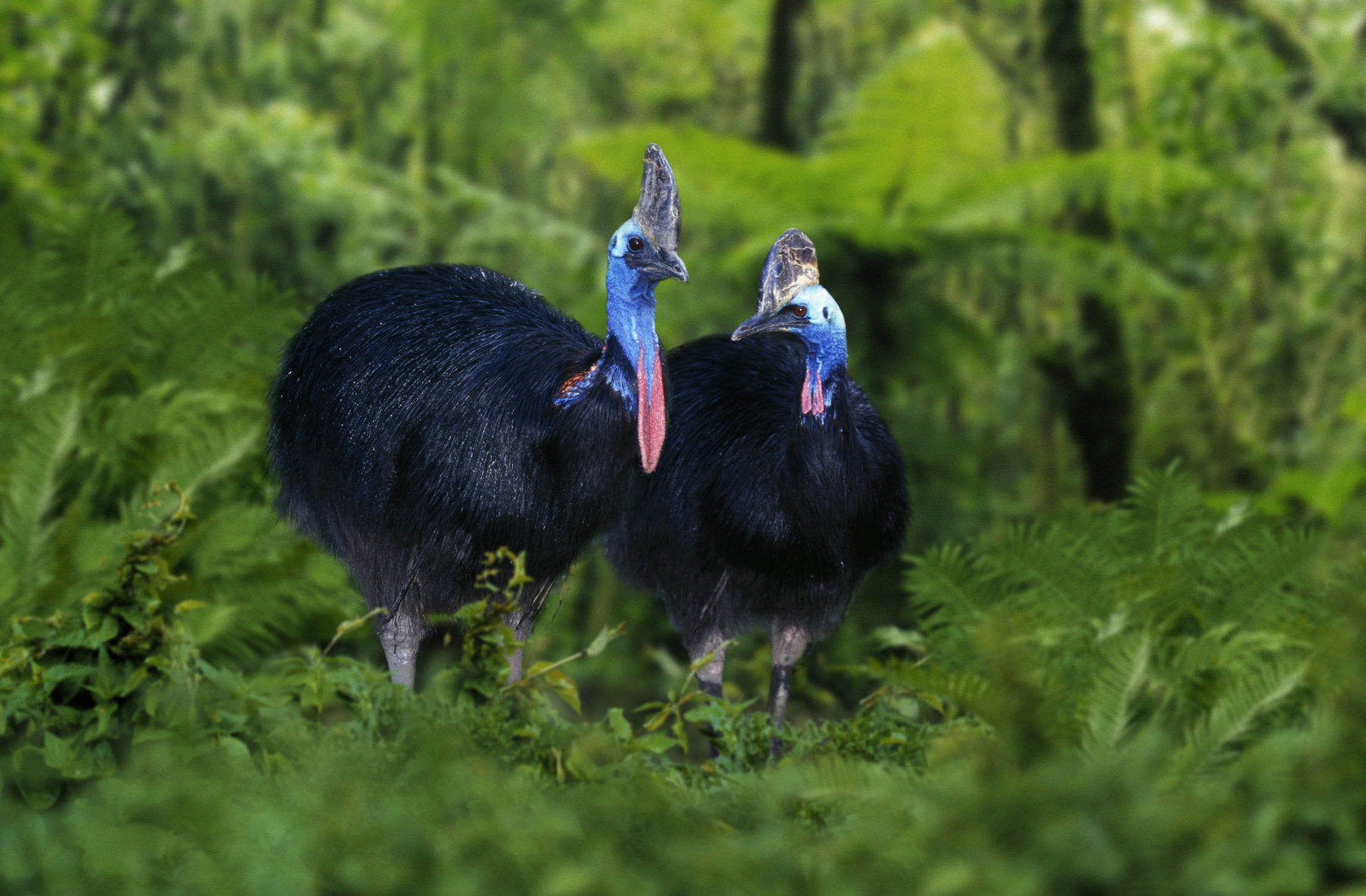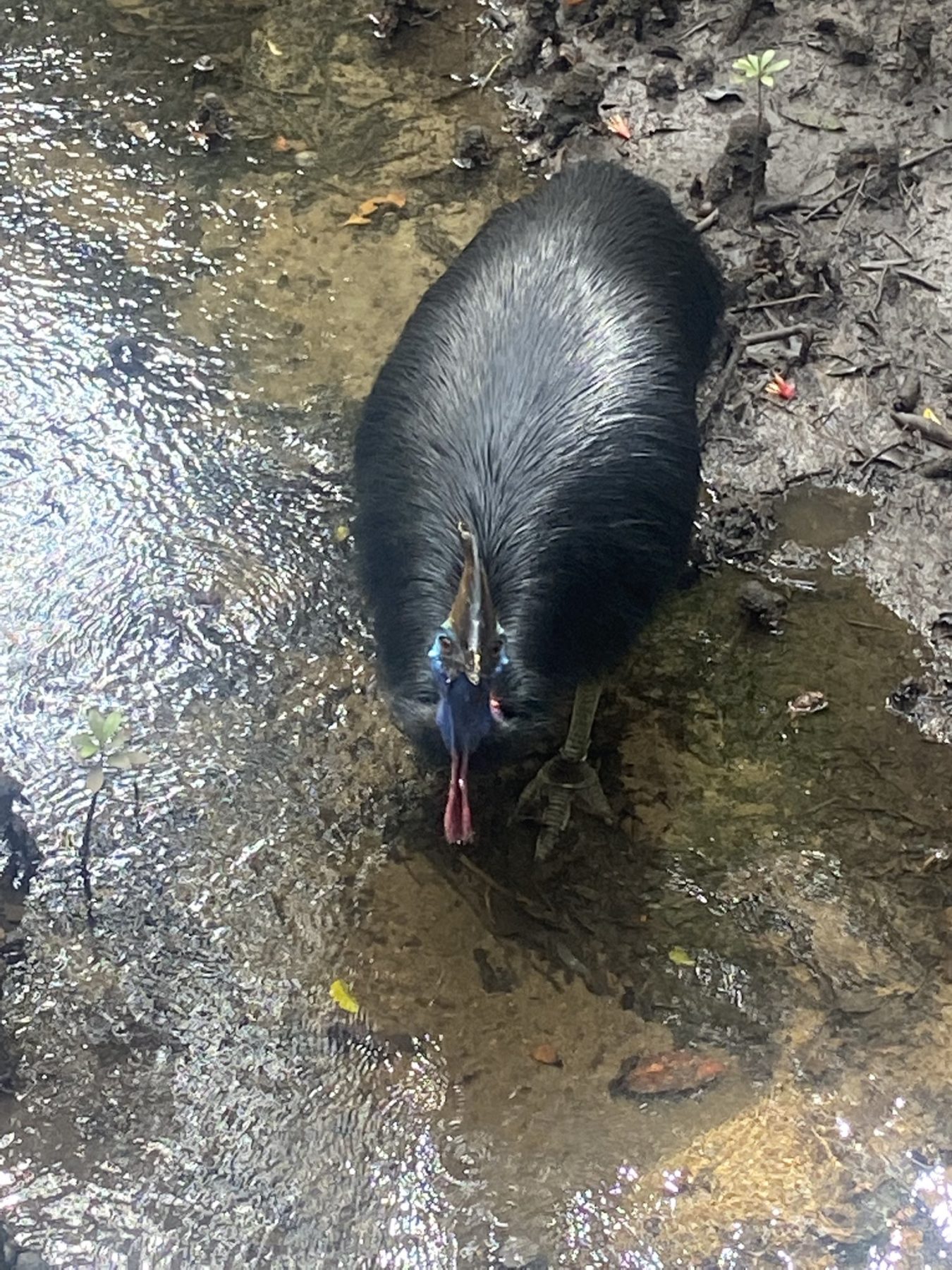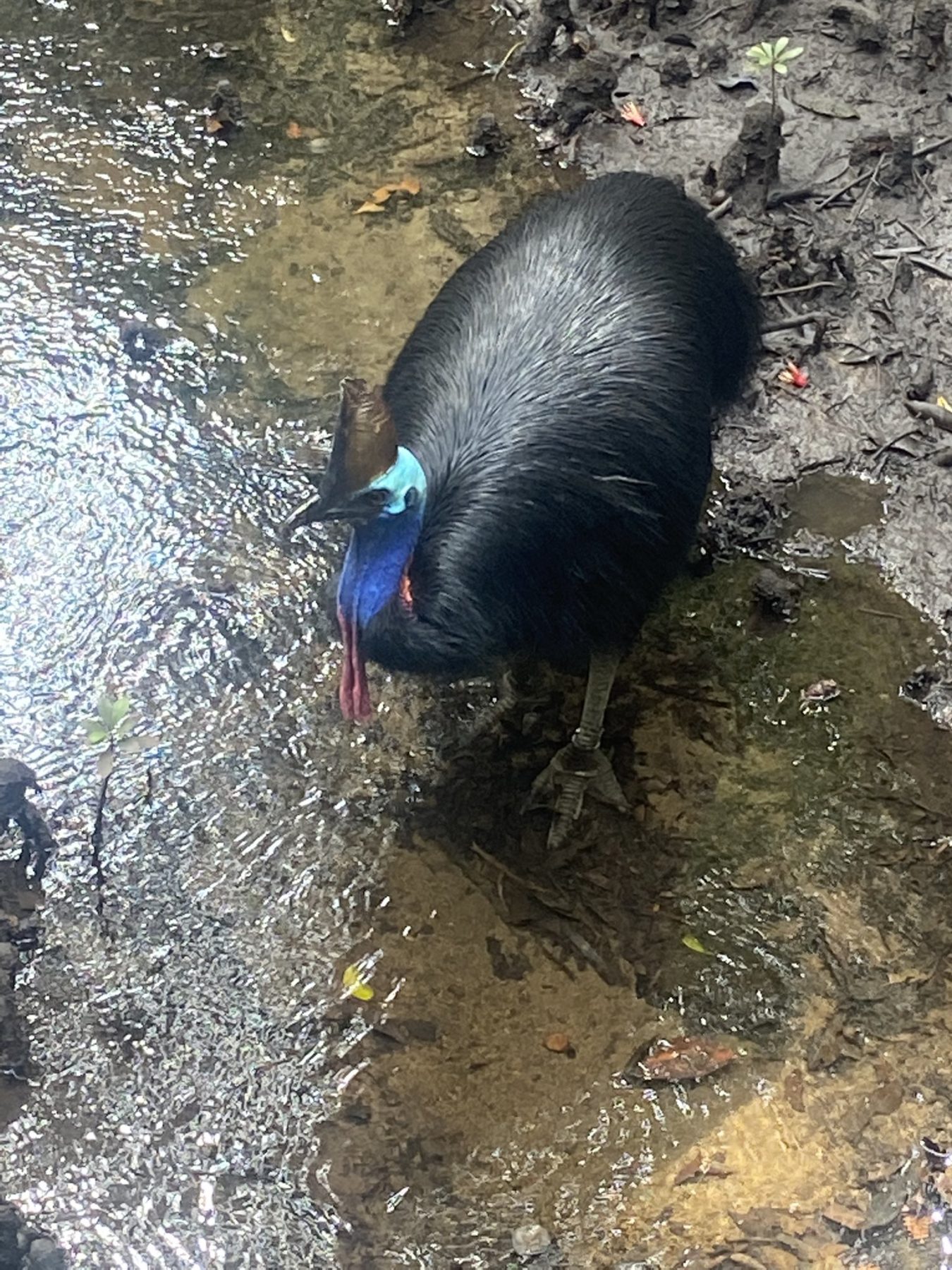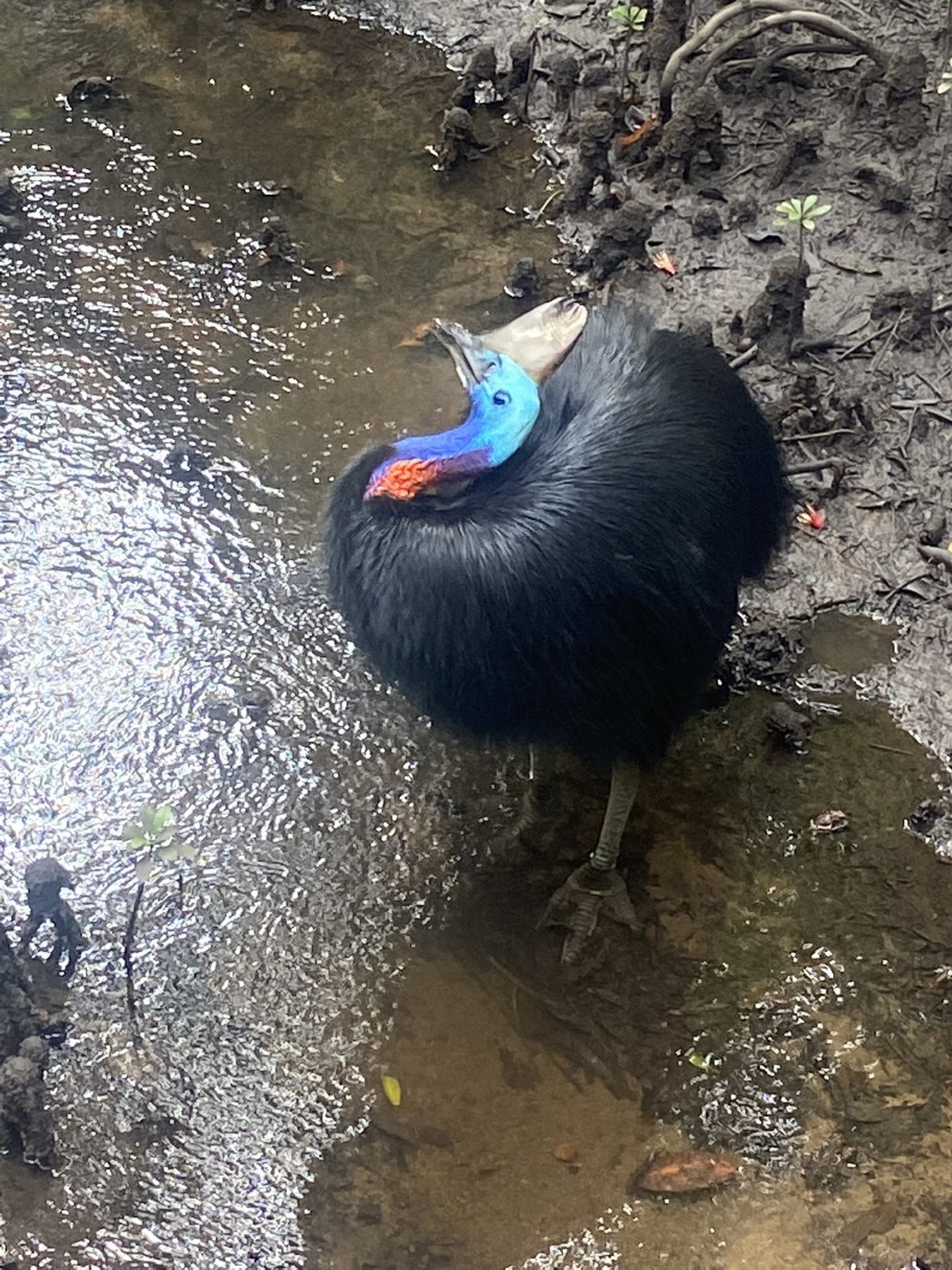Cassowary pair is once-in-a-lifetime sighting, say Cape York Traditional Owners

Two southern cassowaries (Casuarius casuarius johnsonii) were spotted this week on the Cape York Peninsula, Far North Queensland (FNQ), only the third confirmed sighting of the species in the area in four years.
After two weeks of searching, Gomaroi man and founder and CEO of DeadlyScience, Corey Tutt, made the once-in-a-lifetime sighting recently while walking the Marrdja Boardwalk in the Daintree Rainforest.
The southern cassowary is widely known as one of the world’s most dangerous birds and is only found in FNQ. It’s the world’s third-tallest and second-heaviest living bird and is currently listed as endangered under the Australian Government’s Environment Protection and Biodiversity Conservation Act 1999. Under the Queensland Government’s Nature Conservation Act 1992 the Wet Tropics population, to the south of Cape York, is listed as endangered, while the Cape York population is listed as vulnerable.
Chairperson for Ipima Ikaya Aboriginal Corporation and Gudang Yadhaigana Traditional Owner, Reginald Williams, described Corey’s encounter with two cassowaries as extraordinary.
“It’s once in a lifetime to see both together,” he said. “For us, it is very rare to even see one cassowary. We usually come across emus but not cassowary.
“It’s very exciting.”
The sighting comes in the same week as the Queensland government handed back more than 362,000ha of land on the peninsula to the Gudang/Yadhaykenu, Atambaya and Angkamuthi (Seven Rivers) peoples.
Made up of 319,300ha hectares of national park (Cape York Peninsula Aboriginal Land [CYPAL]) and 42,799ha hectares of Aboriginal freehold land – equivalent to 676,000 football fields –- it includes land formerly known as Jardine River National Park, Denham Group National Park, part of Heathlands and Jardine River reserves and two offshore islands. It has been named Apudthama NP (CYPAL).
“We have been waiting for this for a long time,” said Reginald. “It has been given back and will be jointly managed with the Queensland Parks and Wildlife Service. We work side by side with them now.”

Adult cassowaries can reach speeds of up to 50km/h and can grow to 2m in height. Females are slightly larger and can weigh up to 76kg; males can weigh up to 55kg.
There are three extant species of cassowary, including the southern. The northern and dwarf cassowaries are both found in New Guinea.
Cassowaries are solitary birds and only come together during mating season from June–October.
Gudang Yadhaigana Traditional Owner, Nicholas Thompson, said the cassowary has a special connection to Traditional Owners in the area.
“Cassowaries have a very strong cultural tie to the land here,” he said. “It is a totem to some of the families who are Aboriginal and Torres Strait Islander.
“For us having our traditional lands returned, I think the wildlife is going to start coming back naturally. We are starting to see it already. It is a blessing from our ancestors.”
What’s in a name?
The new Apudthama NP (CYPAL) area represents the largest continuous area of heathlands on Cape York Peninsula and includes other diverse landscapes such as grasslands, perched lakes, open woodlands, cloud forests, wetlands and mangroves that connect with islands within the Great Barrier Reef World Heritage Area.
“It marks the government returning more than 4.3 million hectares to Traditional Owners on Cape York – equivalent in size to the country of Switzerland,” said Minister for the Environment and the Great Barrier Reef, Meaghan Scanlon.
“These parks are home to unique plants and animals including the cuscus, Jardine painted turtle and is the northernmost extent of the southern cassowary. The Yamarrinh Wachangan Islands (Denham Group) National Park (CYPAL) supports turtle and seabird nesting and is a great example of how we can do a better job of looking after the environment when we focus on caring for Country and people.”
Reginald said the land give back was a long time coming.
“Our elders are very proud and honoured that our land is now in the rightful hands of First Nations people.
“I can proudly say we are now reviving our Dreaming that was denied us.”









